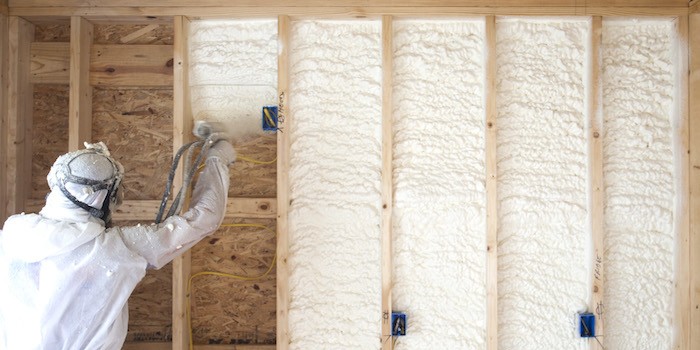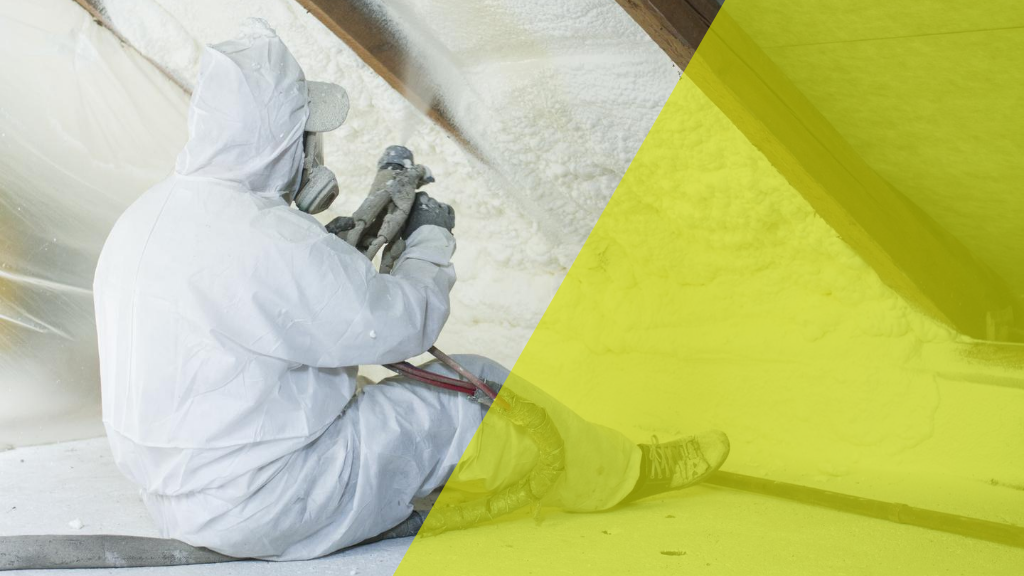Comparing Spray Foam to Conventional Insulation: Which Is Better?
Comparing Spray Foam to Conventional Insulation: Which Is Better?
Blog Article
Just How Spray Foam Can Boost Energy Effectiveness in Any Type Of Structure
Spray foam insulation has arised as a critical remedy for improving power efficiency across various building kinds. By developing an airtight seal that decreases air leakage, it successfully regulates indoor climates while considerably decreasing heating & cooling costs. In addition, its excellent R-value and moisture-resistant properties contribute to lasting energy cost savings and enhanced structure longevity. As homeowner progressively seek sustainable solutions, the implications of spray foam insulation prolong beyond simple utility cost savings. The complete extent of its advantages, however, warrants a closer assessment of just how it can transform energy monitoring methods in both industrial and domestic setups.
Understanding Spray Foam Insulation
Spray foam insulation is significantly acknowledged for its exceptional thermal performance and versatility in numerous applications. Made up primarily of polyurethane, this insulation material is used as a liquid that expands upon contact, filling spaces and producing a seamless obstacle. This special property permits spray foam to adhere to irregular surface areas, making it an ideal option for both property and commercial frameworks.

Application of spray foam insulation is typically done by skilled specialists using specialized tools, guaranteeing optimum performance and safety - Spray Foam. The treating procedure is quick, permitting quick installment and minimal disruption. Because of this, spray foam insulation is increasingly being utilized in brand-new building and construction and retrofitting jobs due to its capability to boost architectural integrity while enhancing total energy performance in structures
Benefits of Power Performance
Energy effectiveness plays a pivotal duty in decreasing functional costs and lessening environmental effect across different industries. By maximizing power usage, home owners and businesses can achieve considerable cost savings on energy costs, which directly enhances monetary efficiency. Efficient energy usage indicates much less dependence on nonrenewable fuel sources, therefore adding to a decrease in greenhouse gas emissions and advertising a more lasting environment.
Moreover, energy-efficient buildings frequently experience increased building worths. As power prices rise and sustainability ends up being a priority for consumers, residential properties with enhanced power effectiveness functions are much more appealing on the market. This pattern urges financial investment in energy-saving innovations, which can additionally drive innovation and financial growth.
Along with environmental and monetary benefits, power effectiveness can likewise enhance the general convenience and health and wellness of indoor areas. Correct insulation and efficient cooling and heating systems assist maintain constant temperature levels, minimizing drafts and humidity degrees, which in turn can bring about much better indoor air quality.
Inevitably, the advantages of power performance expand past instant financial savings, cultivating a durable economic situation, promoting environmental stewardship, and enhancing the lifestyle for owners in any building.
Exactly How Spray Foam Works
Typically used as a fluid, spray foam increases rapidly upon call with surface areas, forming a solid obstacle that effectively secures splits and spaces. This unique property is because of its chemical make-up, primarily including isocyanates and polyols, which respond when mixed to create a foam that fills gaps and sticks to various products, consisting of concrete, steel, and timber.
When applied, the foam increases to numerous times its initial quantity, ensuring a limited seal that stops air leakage. This procedure considerably minimizes thermal bridging, which takes place when warm transfers through materials, resulting in power loss. The foam's high R-value, a measure of thermal resistance, adds to boosted insulation by reducing warm transfer between the exterior and interior atmospheres.
In addition, spray foam is resistant to moisture and insects, further improving its efficacy in maintaining power effectiveness. Its application can be tailored to various areas, including attics, wall surfaces, and crawl areas, optimizing insulation throughout a structure. Spray Foam. In general, the cutting-edge style and application method of spray foam make it a reliable option for improving power effectiveness in any type of structure, bring about decreased energy prices and a much more sustainable constructed atmosphere

Applications in Various Structures
Many applications of spray foam insulation can be found throughout various building types, enhancing power effectiveness and comfort. In residential homes, spray foam is frequently used in walls and attics to create a smooth obstacle versus air leaks, dramatically reducing home heating and cooling down demands. This application is particularly useful in older homes, where traditional insulation might be inadequate.
In industrial buildings, spray foam insulation is put on roof systems and outside walls, which assists to improve thermal efficiency and safeguard against moisture intrusion. Its light-weight nature makes it an ideal option for retrofitting existing structures without including significant weight. Additionally, spray foam can be made use of in commercial settings to insulate pipes and storage tanks, preserving temperature level control for delicate products.
Institutional structures, such as healthcare facilities and schools, take advantage of spray foam insulation by making sure a constant indoor climate that supports occupant comfort and health. The flexibility of spray foam permits it to adjust to various building shapes and dimensions, making it a recommended choice for architects and home builders looking for effective insulation look here services. Generally, spray foam insulation serves as a vital part in achieving energy-efficient buildings across all markets.
Long-Term Price Financial Savings
Spray foam insulation provides substantial lasting price savings for structure proprietors and owners by decreasing power consumption and lowering utility costs. By giving a browse around this web-site premium air seal, spray foam reduces the seepage of outdoors air, consequently boosting the thermal efficiency of a structure. This results in a lot more efficient heating and cooling processes, which can cause substantial decreases in energy prices over time.
In enhancement to immediate cost savings on energy bills, the longevity and long life of spray foam insulation add to its financial advantages. Unlike typical insulation materials, which might sag, work out, or wear away, spray foam preserves its effectiveness for decades, lowering the requirement for constant replacements or repair services. This durability translates to decrease upkeep costs and much less disturbance for owners.
Additionally, structures equipped with spray foam insulation usually delight in a rise in property worth, making them more enticing to potential purchasers or tenants. As power efficiency becomes significantly prioritized, residential or commercial properties with efficient insulation remedies stand apart in the marketplace. Eventually, the assimilation of spray foam insulation not just enhances comfort yet additionally represents a critical financial investment that produces significant financial benefits over the long term.
Conclusion
In conclusion, spray foam insulation serves as an important element in enhancing energy efficiency across diverse building types. Its ability to create a seamless barrier against air leak, incorporated with high R-values and moisture-resistant residential or commercial properties, dramatically decreases energy consumption and connected expenses. The execution of spray foam not only adds to constant interior temperature levels however likewise raises property value, underscoring its function as a prudent financial investment for both commercial and property homes.
Spray foam insulation has arised as a pivotal solution for improving energy efficiency across numerous building types. Spray Foam. As an outcome, spray foam insulation is progressively being used in new building and retrofitting jobs due to its ability to boost architectural stability while enhancing total energy efficiency in structures
On the whole, the ingenious layout and application method of spray foam make check it out it a reliable service for boosting power effectiveness in any kind of framework, leading to lowered power costs and an extra lasting constructed atmosphere.
Countless applications of spray foam insulation can be found throughout different building types, improving energy performance and comfort.In conclusion, spray foam insulation offers as a vital component in enhancing energy performance throughout diverse structure types.
Report this page